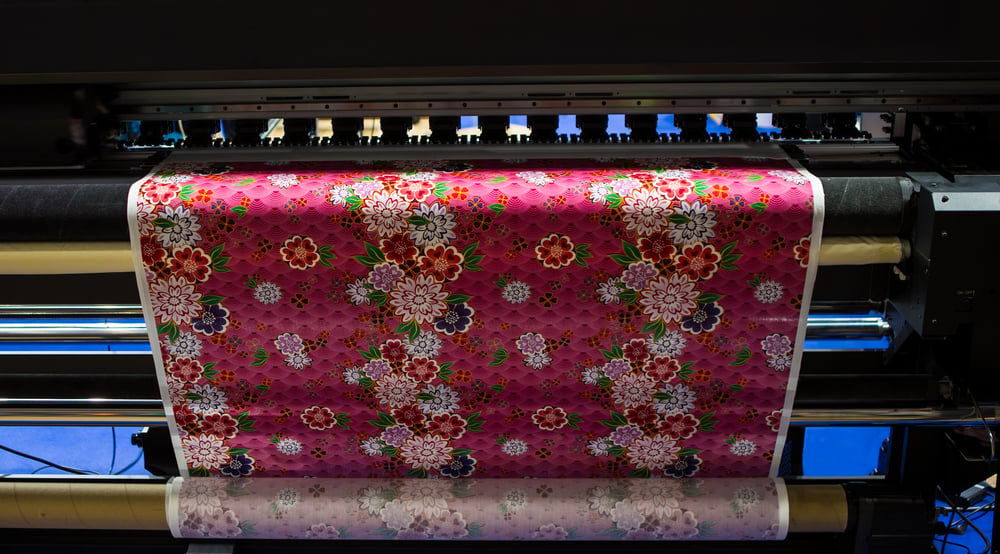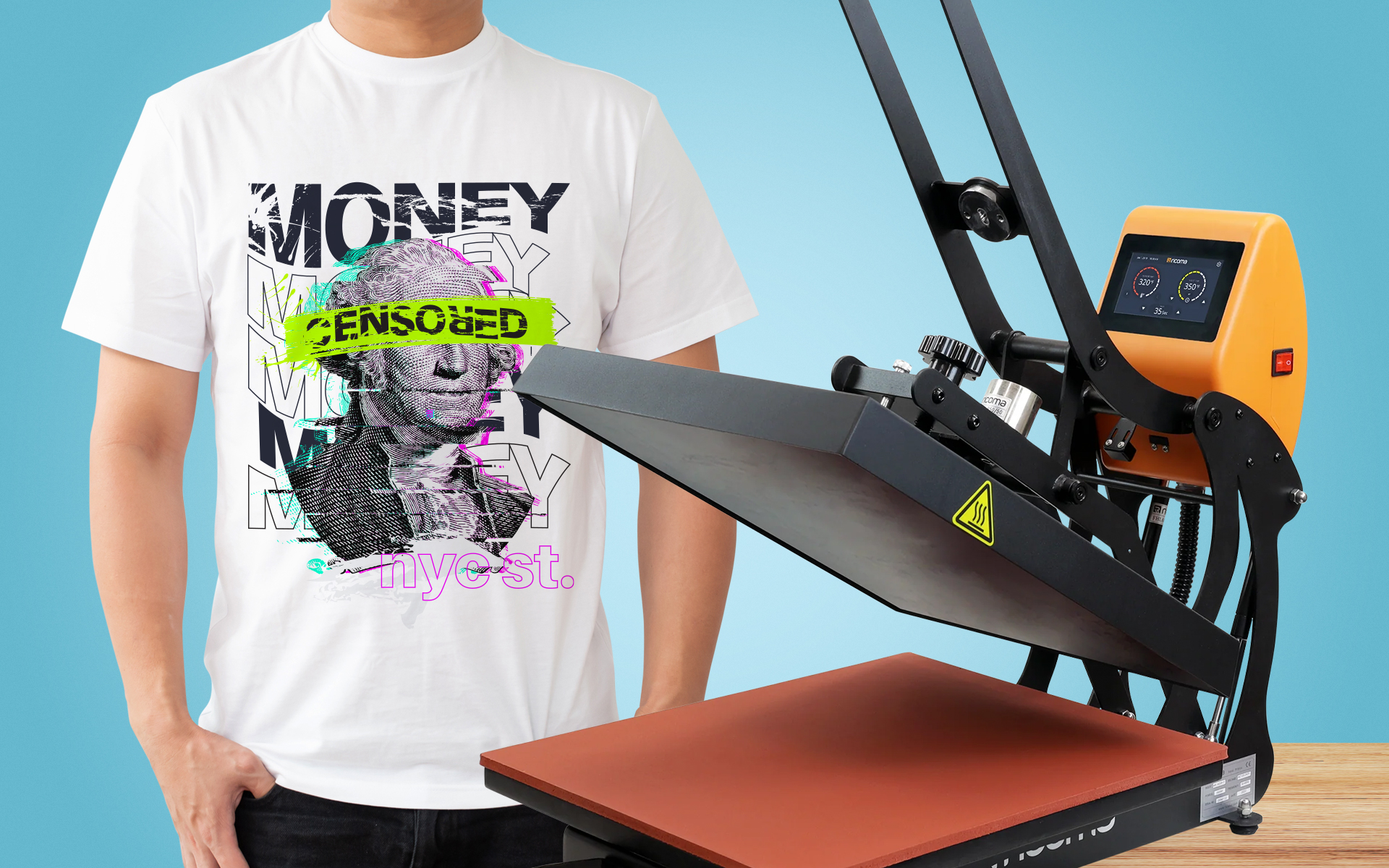The Ultimate Overview to Sublimation Printing for Custom-made Apparel
The Ultimate Overview to Sublimation Printing for Custom-made Apparel
Blog Article
The Increase of DTF Printing: Exploring Its Benefits and Applications
The development of Straight to Movie (DTF) printing technology is changing the custom-made apparel sector, providing significant benefits and a broad selection of applications. As the hunger for custom-made products continues to expand, recognizing just how DTF printing can satisfy these evolving needs is significantly essential.

Recognizing DTF Printing Innovation
Understanding DTF Printing Innovation marks a considerable development in the fabric printing sector, particularly for its convenience and effectiveness. Direct-to-Film (DTF) printing is a sophisticated process that includes printing styles onto unique transfer movies, which are after that transferred onto fabric utilizing warmth and stress. Unlike typical methods, DTF printing does not need pre-treatment of the fabric, enabling a much more structured operations.

As soon as treated, the film is put onto the fabric, and a heat press transfers the layout by using regular heat and pressure. This causes lively, premium prints that adhere flawlessly to numerous material kinds, consisting of cotton, polyester, and blends (DTF printing). The innovation's capacity to create complex and brilliant layouts with marginal configuration makes it a game-changer in the textile printing sector
Secret Benefits of DTF Printing
One of the crucial advantages of DTF printing is its phenomenal versatility, which enables for high-grade prints on a vast array of fabric types. This capability extends beyond conventional cotton to include polyester, nylon, leather, and even combined textiles, making it suitable for varied fabric applications. This adaptability minimizes the need for numerous printing innovations, enhancing production processes and minimizing total expenses.
An additional substantial benefit is the remarkable print high quality that DTF technology delivers. By utilizing vibrant, long lasting inks and accurate application methods, DTF prints preserve their color fidelity and sharpness even after numerous laundries. This leads to a product that not just looks specialist however likewise stands the test of time, giving constant worth to both suppliers and end-users.
Furthermore, DTF printing offers a simplified operations, which can result in raised effectiveness and productivity. Unlike typical methods such as screen printing, DTF does not need complex configuration or substantial drying times. This convenience of use makes it an appealing option for services of all dimensions, enabling quicker turnaround times and the ability to take care of little to huge production keeps up marginal hassle.
Applications in Custom-made Clothing
In the world of custom-made apparel, DTF printing attracts attention as a game-changing modern technology that enables developers and makers to generate bespoke apparel with unequaled detail and high quality. Direct-to-film (DTF) printing has revolutionized the customized clothing market by supplying adaptability in style, vibrant color recreation, and toughness. This ingenious method permits for intricate styles to be moved onto a broad selection of materials without compromising the stability of the material.
One substantial application of DTF printing remains in creating custom-made tees, hoodies, and sports apparel. The ability to publish complex graphics with great information and slopes makes it perfect for customized apparel, such as group uniforms and marketing product. DTF printing is especially advantageous for one-off items and limited-run orders, offering a reliable and cost-effective service compared to typical display printing approaches (heat transfer vinyl printing).
Additionally, DTF printing has opened up brand-new methods for designer to explore special patterns and structures, making it possible for the development of cutting-edge, avant-garde collections. This innovation likewise supports small services and independent artists by reducing the barriers to entrance in the customized clothing market. Inevitably, DTF printing is improving the landscape of customized clothing, merging artistic expression with technological advancement.
Adaptability Across Different Materials
Structure on the innovations in custom-made garments, DTF printing's adaptability throughout different materials further boosts its charm. Unlike conventional printing methods, DTF (Direct-to-Film) printing can be used to a substantial series of substrates, consisting of cotton, polyester, blends, natural leather, and also why not check here hard surfaces like timber and glass. This flexibility is achieved through the one-of-a-kind procedure where layouts are published onto a special movie and afterwards moved onto the material using a warmth press. This permits vibrant, premium prints that preserve their stability throughout different structures and structures.
The capacity to publish on diverse products opens many possibilities for businesses throughout various markets. In the promotional items sector, firms can tailor a broad variety of items, from carry caps and bags to mugs and phone situations, all with the very same printing technology. In the fashion business, DTF printing makes it possible for designers to explore complex patterns and vibrant colors on unusual fabrics, pressing the boundaries of creative thinking.
Additionally, DTF printing's compatibility with different materials additionally converts to cost-efficiency and minimized waste, as manufacturers can make use of the same tools for numerous applications. This flexibility not just expands the range of item offerings however also improves operational performance.
Future Prospects of DTF Printing
As the marketplace develops, the future potential customers of DTF printing are positioned to change numerous sectors through continuous technology and technical developments. The surge in demand for customized apparel and advertising goods is driving the demand for extra reliable, functional, and cost-effective printing techniques. DTF printing, with its capacity to create high-quality, durable prints on a large variety of materials, stands at the leading edge of this transformation.
Arising patterns show that DTF printing will progressively incorporate with automation and AI innovations, boosting manufacturing speed and decreasing labor prices. Advanced software program options will certainly further maximize design precision, shade matching, and print uniformity, resolving several of the present limitations. In addition, green inks and recyclable transfer films are expected to get grip, straightening with global visit the site sustainability objectives.
As research and growth initiatives Home Page proceed to broaden, the range of DTF printing will likely expand, opening new methods for creative and industrial applications. In recap, the future of DTF printing is intense, promising considerable innovations and wider industry adoption.
Verdict

Comprehending DTF Printing Technology marks a significant improvement in the textile printing market, specifically for its convenience and performance. Direct-to-Film (DTF) printing is an advanced procedure that includes printing designs onto unique transfer films, which are then transferred onto fabric making use of warmth and pressure. DTF printing is specifically useful for limited-run orders and one-off items, providing a effective and cost-effective remedy contrasted to typical screen printing methods.
Unlike conventional printing techniques, DTF (Direct-to-Film) printing can be applied to a comprehensive array of substratums, consisting of cotton, polyester, blends, natural leather, and even difficult surfaces like wood and glass.DTF printing technology is reinventing the custom clothing market by offering efficient, cost-efficient, and flexible options for creating vivid designs on various textiles without pre-treatment.
Report this page